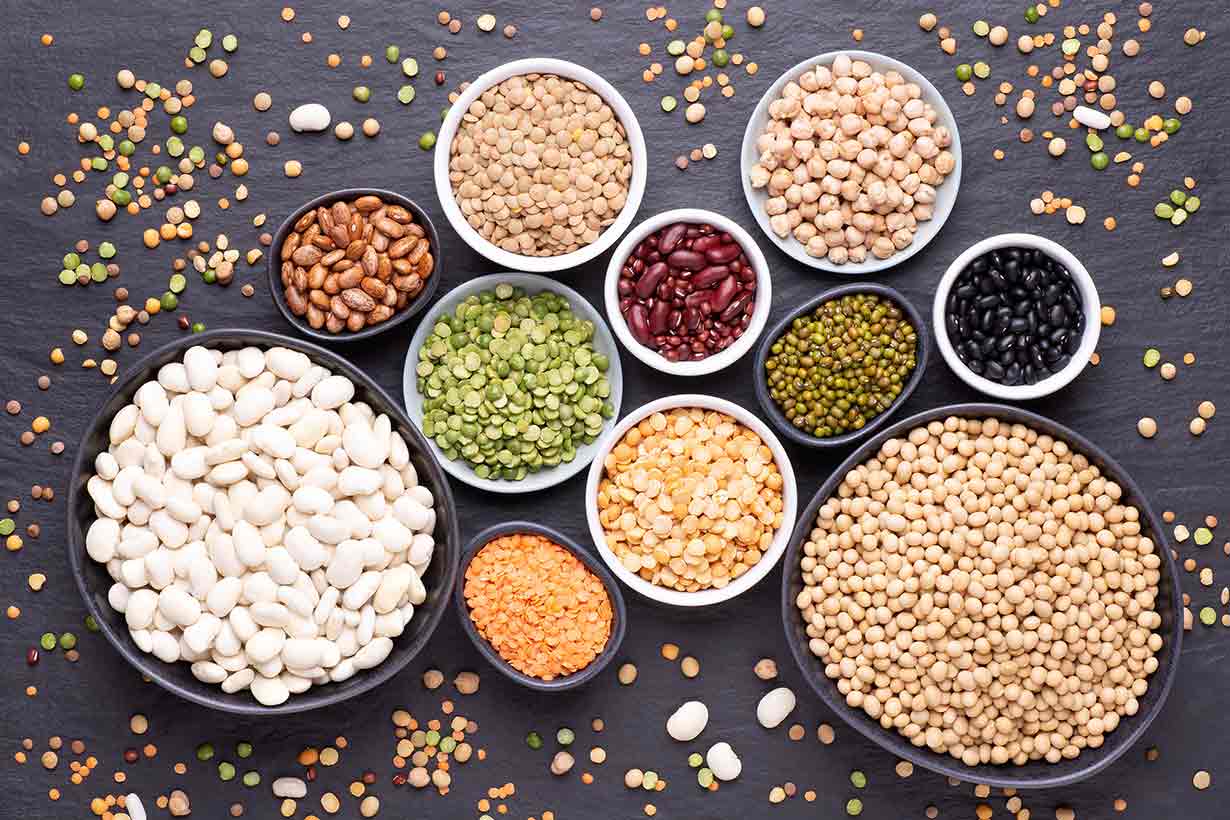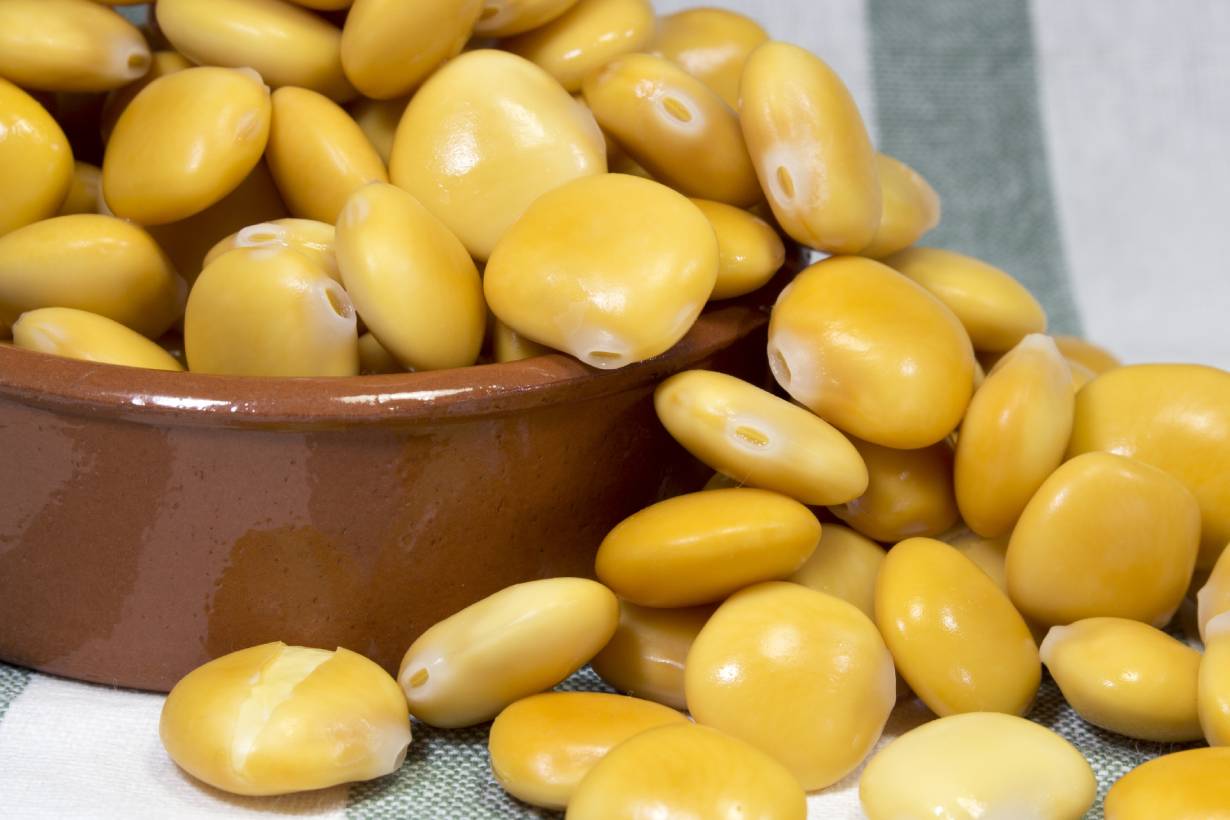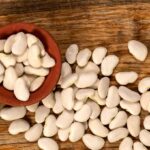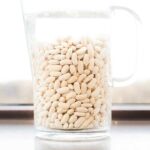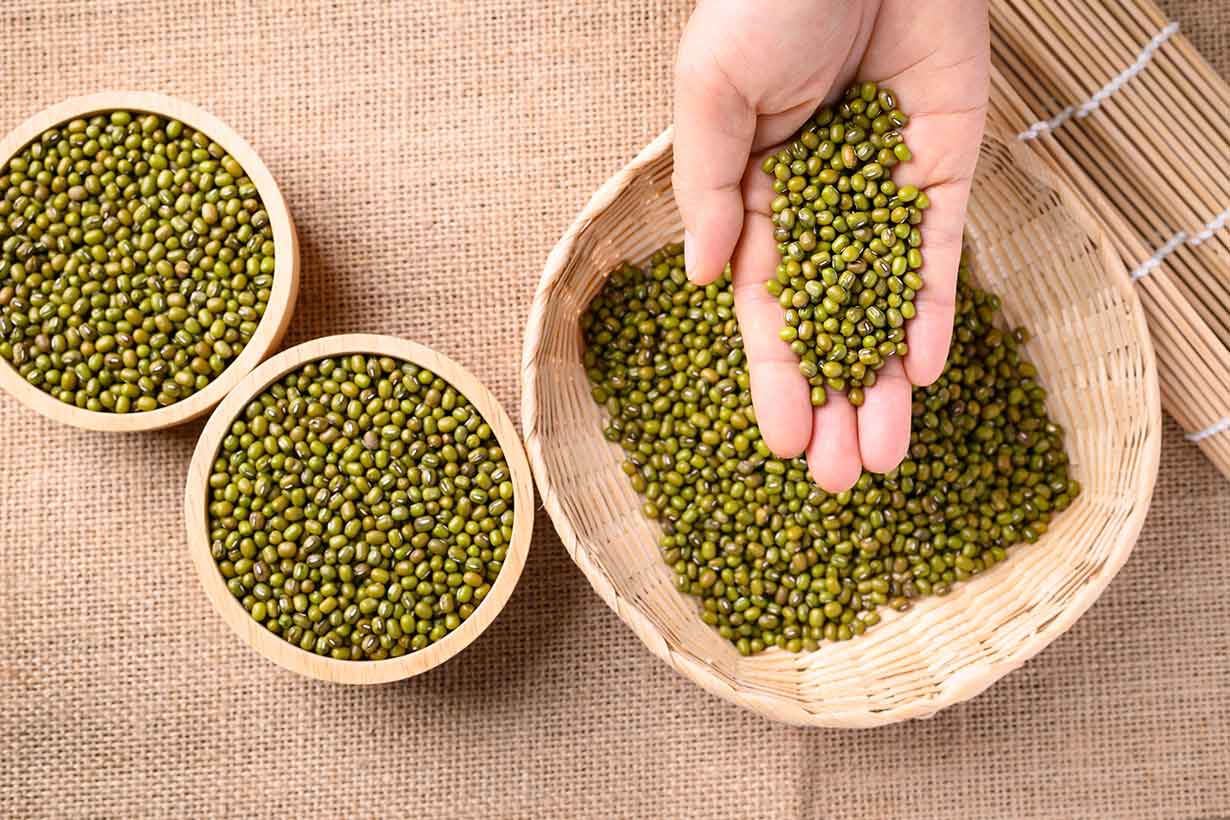Highest protein legumes: Soybeans rank first with 36.5g protein per 100 g (raw), followed by lupin beans with 36.2 g.
Legumes are among the best plant-based sources of protein, but there are dozens of different varieties.
If you’re looking for legumes with the highest protein content, you’ve come to the right place. In this article, we rank popular legumes by the amount of protein they provide.
After this, we’ll provide details on how much protein each legume provides per 100 grams and per cup, for both raw and cooked weights.
All protein values are sourced from the USDA FoodData Central database.
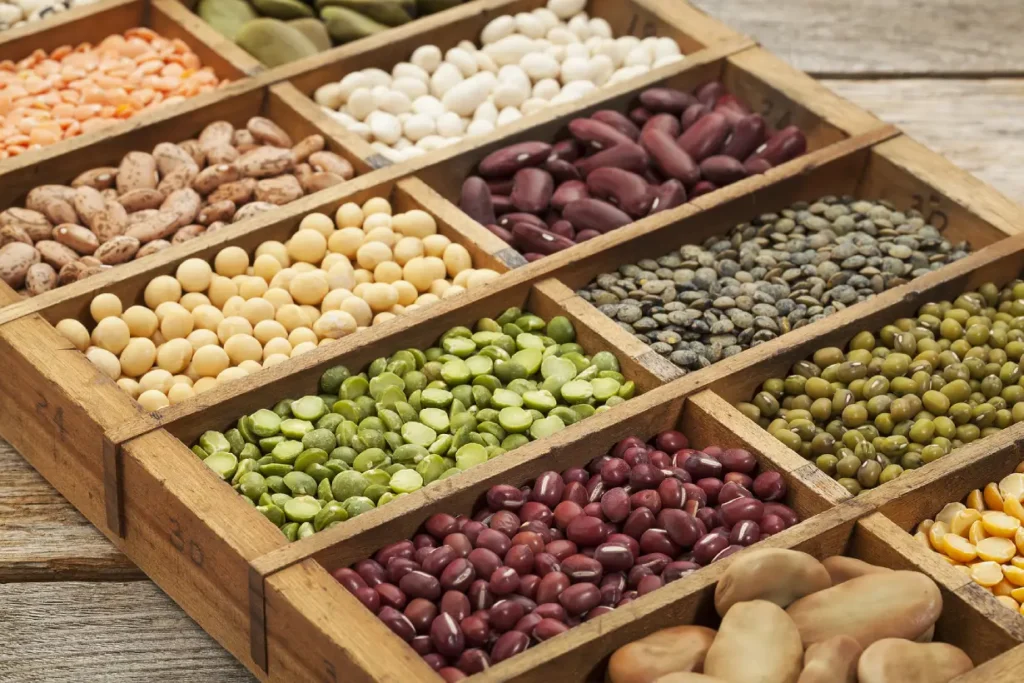
Legumes Ranked By Highest Protein Content per 100 g (Raw Weight)
All protein values and weights refer to mature, dried legumes.
| Rank | Legume | Protein per 100 g (raw) | Reference |
|---|---|---|---|
| 1 | Soybeans | 36.5 g | 1 |
| 2 | Lupin beans | 36.2 g | 2 |
| 3 | Fava beans | 26.1 g | 3 |
| 4 | Lentils | 24.6 g | 4 |
| 5 | Mung beans | 23.9 g | 5 |
| 6 | Black-eyed peas (cowpeas) | 23.8 g | 6 |
| 7 | White beans | 23.4 g | 7 |
| 8 | Split peas | 23.1 g | 8 |
| 9 | Borlotti beans (cranberry beans) | 23.0 g | 9 |
| 10 | Moth beans | 22.9 g | 10 |
| 11 | Red kidney beans | 22.5 g | 11 |
| 12 | Navy beans | 22.3 g | 12 |
| 13 | Great Northern beans | 21.9 g | 13 |
| 14 | Black beans | 21.6 g | 14 |
| 15 | Lima beans | 21.5 g | 15 |
| 16 | Pinto beans | 21.4 g | 16 |
| 17 | Chickpeas | 20.5 g | 17 |
| 18 | Adzuki beans | 19.9 g | 18 |
Detailed Protein Content of Each Legume Per Cup Serving and Per 100 g
Note: The ‘per cup’ weights below are based on USDA data, retrieved from the same source as the values per 100 grams.
1. Soybeans
- Protein per 100 g (raw): 36.5 g (1)
- Protein per 186 g cup (raw): 67.9 g
- Protein per 100 g (cooked): 18.2 g (19)
- Protein per 172 g cup (cooked): 31.3 g
2. Lupin beans
- Protein per 100 g (raw): 36.2 g (2)
- Protein per 180 g cup (raw): 65.2 g
- Protein per 100 g (cooked): 15.6 g (20)
- Protein per 166 g cup (cooked): 25.9 g
3. Fava beans
- Protein per 100 g (raw): 26.1 g (3)
- Protein per 150 g cup (raw): 39.2 g
- Protein per 100 g (cooked): 7.6 g (21)
- Protein per 170 g cup (cooked): 12.9 g
4. Lentils
- Protein per 100 g (raw): 24.6 g (4)
- Protein per 192 g cup (raw): 47.2 g
- Protein per 100 g (cooked): 9.02 g (22)
- Protein per 198 g cup (cooked): 17.9 g
5. Mung beans
- Protein per 100 g (raw): 23.9 g (5)
- Protein per 207 g cup (raw): 49.5 g
- Protein per 100 g (cooked): 7.02 g (23)
- Protein per 202 g cup (cooked): 14.2 g
6. Black-eyed peas (cowpeas)
- Protein per 100 g (raw): 23.8 g (6)
- Protein per 167 g cup (raw): 39.7 g
- Protein per 100 g (cooked): 8.13 g (24)
- Protein per 171 g cup (cooked): 13.9 g
7. White beans
- Protein per 100 g (raw): 23.4 g (7)
- Protein per 202 g cup (raw): 47.3 g
- Protein per 100 g (cooked): 9.73 g (25)
- Protein per 179 g cup (cooked): 17.4 g
Please note: The USDA nutritional data entry for ‘white beans’ uses a broad term that may refer to common bean varieties such as cannellini beans.
8. Split peas
- Protein per 100 g (raw): 23.1 g (8)
- Protein per 196 g cup (raw): 45.3 g
- Protein per 100 g (cooked): 8.34 g (26)
- Protein per 196 g cup (cooked): 16.3 g
9. Borlotti beans (cranberry beans)
- Protein per 100 g (raw): 23.0 g (9)
- Protein per 195 g cup (raw): 44.8 g
- Protein per 100 g (cooked): 9.34 g (27)
- Protein per 177 g cup (cooked): 16.5 g
10. Moth beans
- Protein per 100 g (raw): 22.9 g (10)
- Protein per 196 g cup (raw): 44.9 g
- Protein per 100 g (cooked): 7.81 g (28)
- Protein per 177 g cup (cooked): 13.8 g
11. Red kidney beans
- Protein per 100 g (raw): 22.5 g (11)
- Protein per 184 g cup (raw): 41.4 g
- Protein per 100 g (cooked): 8.67 g (29)
- Protein per 177 g cup (cooked): 15.3 g
12. Navy beans
- Protein per 100 g (raw): 22.3 g (12)
- Protein per 208 g cup (raw): 46.4 g
- Protein per 100 g (cooked): 8.23 g (30)
- Protein per 182 g cup (cooked): 15.0 g
13. Great Northern beans
- Protein per 100 g (raw): 21.9 g (13)
- Protein per 183 g cup (raw): 40.1 g
- Protein per 100 g (cooked): 8.33 g (31)
- Protein per 177 g cup (cooked): 14.7 g
14. Black beans
- Protein per 100 g (raw): 21.6 g (14)
- Protein per 194 g cup (raw): 41.9 g
- Protein per 100 g (cooked): 8.86 g (32)
- Protein per 172 g cup (cooked): 15.2 g
15. Lima beans
- Protein per 100 g (raw): 21.5 g (15)
- Protein per 178 g cup (raw): 38.3 g
- Protein per 100 g (cooked): 7.8 g (33)
- Protein per 188 g cup (cooked): 14.7 g
16. Pinto beans
- Protein per 100 g (raw): 21.4 g (16)
- Protein per 193 g cup (raw): 41.3 g
- Protein per 100 g (cooked): 9.01 g (34)
- Protein per 171 g cup (cooked): 15.4 g
17. Chickpeas
- Protein per 100 g (raw): 20.5 g (17)
- Protein per 200 g cup (raw): 41.0 g
- Protein per 100 g (cooked): 8.86 g (35)
- Protein per 164 g cup (cooked): 14.5 g
18. Adzuki beans
- Protein per 100 g (raw): 19.9 g (18)
- Protein per 197 g cup (raw): 39.2 g
- Protein per 100 g (cooked): 7.52 g (36)
- Protein per 230 g cup (cooked): 17.3 g
Why Do Raw And Cooked Weights Have Different Protein Content?
Just in case anyone wonders why the raw and cooked weights can look so different, let me explain it.
First, if we cook 100 grams of raw legumes, those legumes will absorb a large amount of water during the cooking process. One study on this found that 10 different varieties of dried beans all absorbed approximately 1.5x their weight in water (37).
In this context, 100 grams of raw legumes may weigh around 250 grams after boiling, since they have absorbed around 1.5 grams of water per gram of raw legumes.
Key Takeaways About the Protein Content of Legumes
To summarize, let’s look at what we’ve learned in this article:
- All legumes are excellent protein sources: They are among the most protein-rich plant foods.
- But protein content varies: Despite all legumes being high in protein, some offer nearly twice as much protein per gram as others.
- Soybeans and lupins lead the pack: Soybeans and lupin beans offer the most protein. After these two legumes, lentils, fava beans, and mung beans round out the top 5 legumes for protein.
Lastly, while protein is a key benefit of legumes, they offer much more than this nutritionally and also provide significant levels of fiber, vitamins, and minerals.
For more on legumes, see this list of the most fiber-rich beans and pulses.
Learn more about the different legume varieties here: 25 Types of Legumes and Their Nutritional Values

